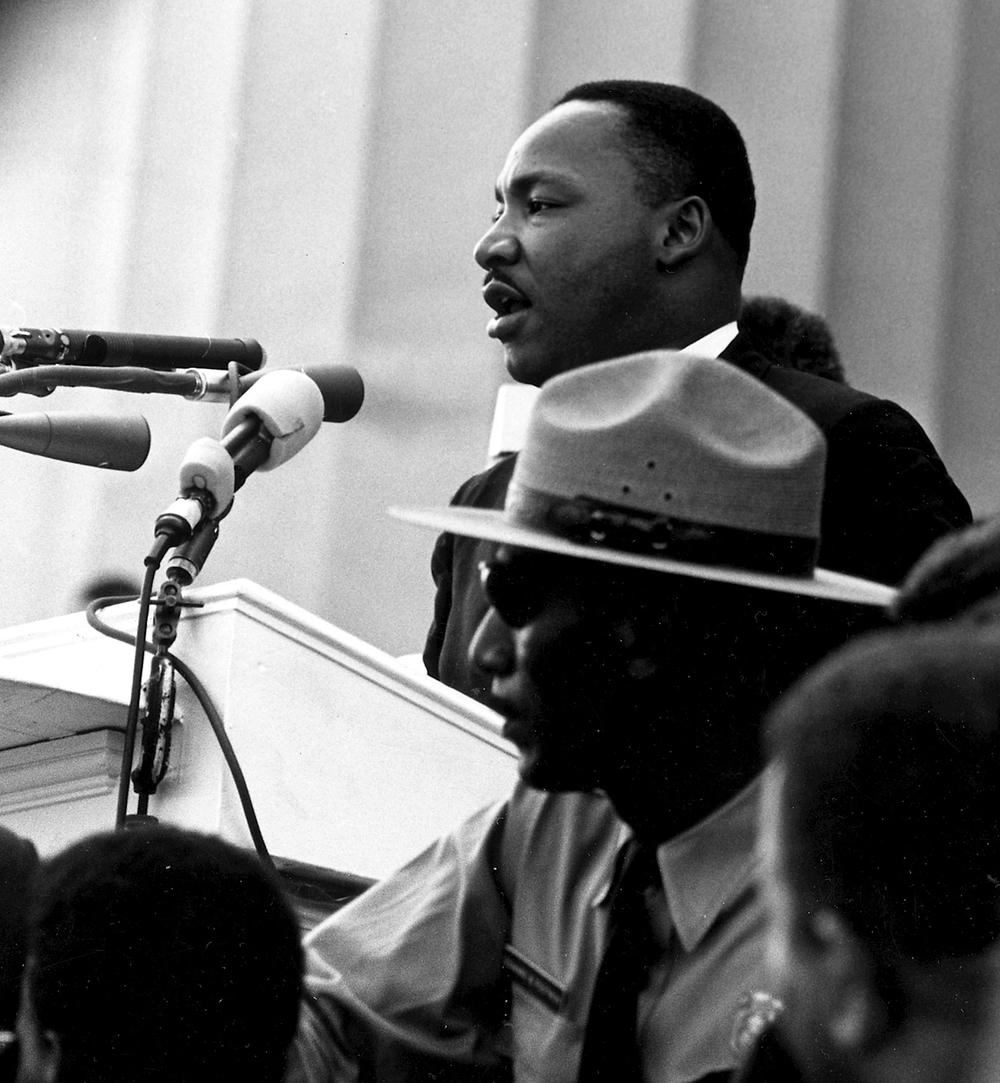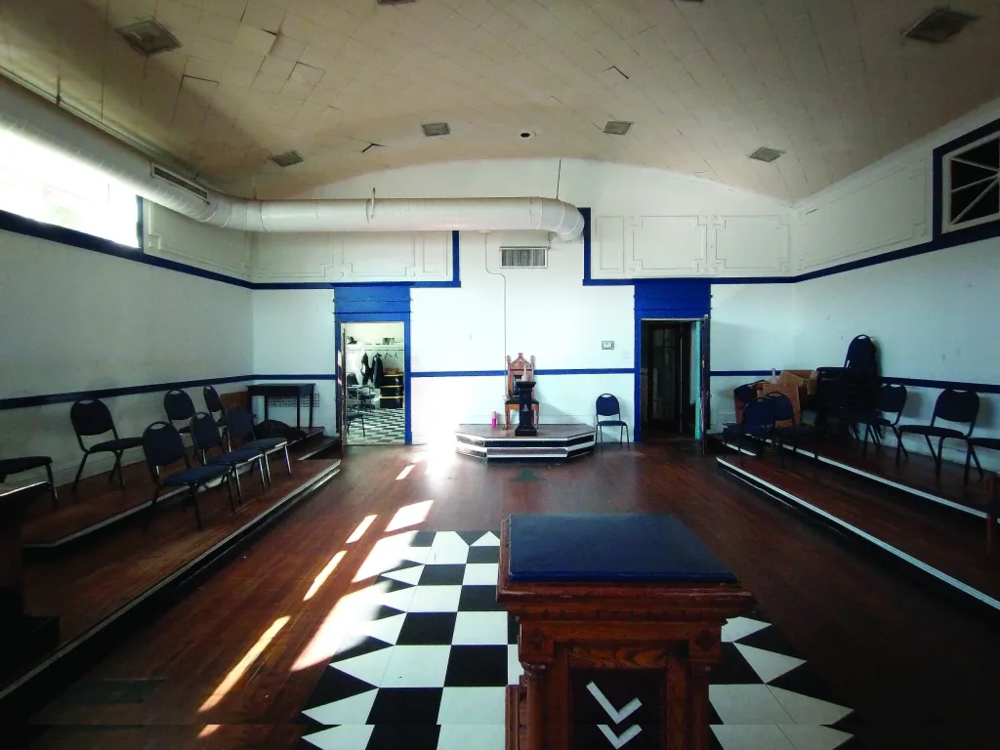
Caption
Dr. Martin Luther King Jr. giving his "I Have a Dream" speech during the March on Washington in Washington, D.C., on August 28, 1963.
Credit: Wikimedia Commons
In 1956, Forbes magazine described the Auburn Avenue in Downtown Atlanta as “The richest Negro street in the world.” Standard Life Company, Atlanta Life Insurance Company, and Atlanta Daily World represented some of the distinguished Black-owned businesses in the Sweet Auburn district. Ebenezer Baptist Church offered a spiritual home of civil rights hero Rev. Martin Luther King Jr.
John Wesley Dobbs (1882–1961) developed the three-story Renaissance Revival style Prince Hall Masonic Lodge along the thoroughfare that became a hub for the civil rights, financial, cultural, and professional services community. The self-proclaimed Mayor of Auburn Avenue would become the grandfather of Atlanta’s first Black mayor, Maynard Jackson (1938–2003).
Prince Hall Masonic Lodge was designed by Charles Hopson (1865-1941), an English-born architect respected for his mastery of different classical architectural styles. Ponce De Leon Methodist Church (c. 1915 and renamed St Paul’s Presbyterian Church), Rock Spring Presbyterian Church (c. 1923), and Peachtree Christian Church (c. 1928) in Atlanta are graced with intricate brick detailing on the building exteriors. The Masonic Lodge features impressive brick ornamentation and ornamental panels with the Prince Hall Masonic motif.

Dr. Martin Luther King Jr. giving his "I Have a Dream" speech during the March on Washington in Washington, D.C., on August 28, 1963.
Completed in 1937 and expanded in 1955, the ground and basement level of the 16,000-square-foot Masonic Lodge housed the headquarters for the Southern Christian Leadership Conference (SCLC) that included Dr. King’s office from 1963 to his assassination in 1968. The nation’s first Black-owned radio station, WERD, a franchise of the Madame C.J. Walker African American hair care empire, and professional services companies were located on the second floor of the building.
Lord Aeck Sargent Principal Jack Pyburn and Project Preservation Architect David Steele are leading the restoration of Prince Hall Masonic Lodge. Project funding is coming from a variety of sources including the Trust for Public Land. Restoration will focus on roof and exterior wall repairs, mechanical and electrical upgrades, selective window replacement, restoration of significant interior finishes and features, and the restoration of the first floor and basement that was occupied by the SCLC for interpretation by the National Park Service. Lord Aeck Sargent is using historic photos and records to guide restoration of the building.
With over 45 years of preservation architectural work on projects such as Hinman Research Building at Georgia Tech, Pyburn is honored to focus on historic sites associated with African American history and the civil rights movement in the past years of his career.

An image from the third floor inside Prince Hall Masonic Lodge in Atlanta
“The time is long overdue to recognize the substantial and wide-ranging contributions of African Americans to American history,” Pyburn said.
A restored Prince Hall Masonic Hall will be a catalyst for a restored Sweet Auburn District and renewed conversations about the Civil Rights Movement.
For more information about Jack Pyburn and Prince Hall Masonic Lodge, tune into the Uplifting Places podcast hosted by Melody Harclerode on Spotify.
This story comes to GPB through a reporting partnership with Rough Draft Atlanta.